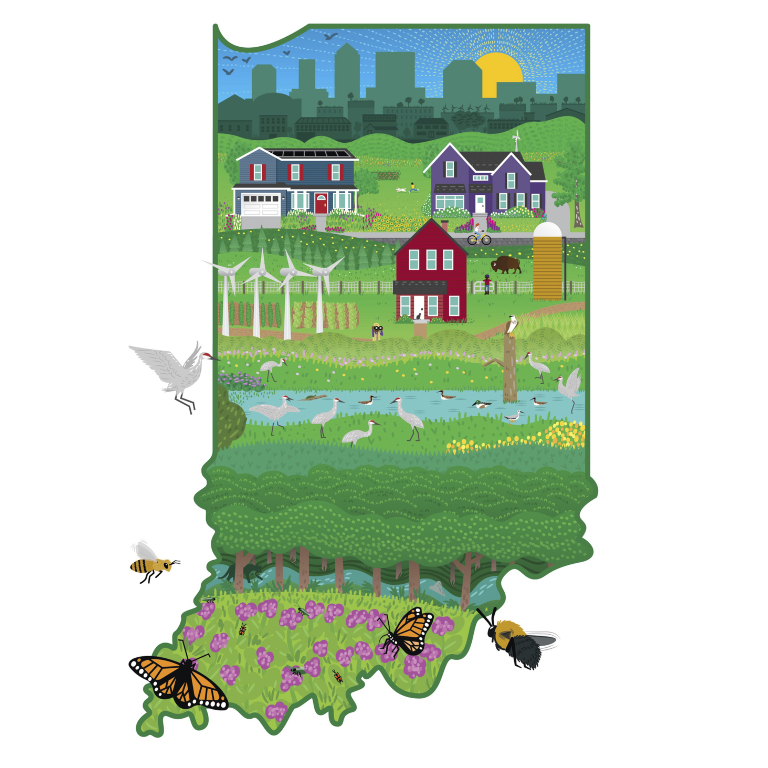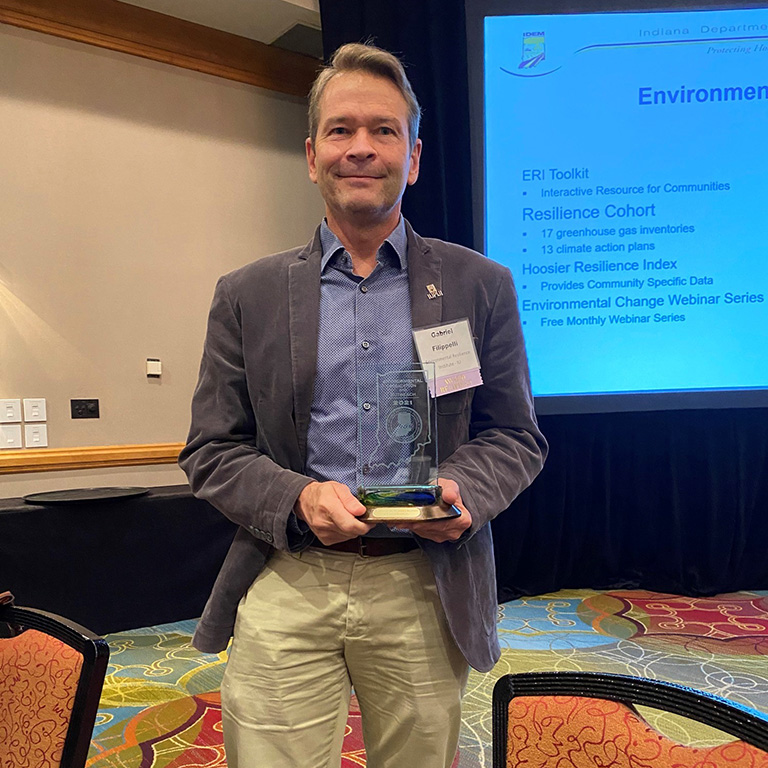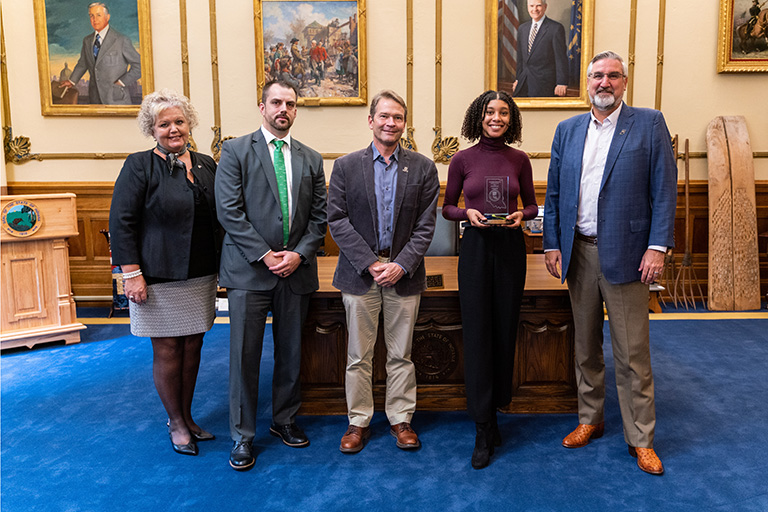On Sept. 23, Indiana University’s Environmental Resilience Institute (ERI) received the state’s most prestigious environmental award for its work in helping Indiana communities prepare for climate change.
ERI Executive Director Gabe Filippelli accepted the award during the Indiana Department of Environmental Management’s (IDEM's) Pollution Prevention Conference and Tradeshow in Indianapolis. ERI garnered the honor for its portfolio of initiatives designed to help prepare Hoosier communities for the impacts of climate change, which include more extreme heat and precipitation.
“We’re honored to be recognized for our efforts working with cities, counties, and towns across Indiana to become more resilient to climate change,” said Filippelli. “More and more Hoosiers understand the threat climate change poses to their communities and the burden local governments face in addressing climate change impacts, such as flooding from heavy rainfall and extended heatwaves. Working directly with local governments, ERI has been able to deliver a suite of tailored tools and resources to help Hoosiers understand their communities’ vulnerabilities to climate change and take action. In less than five years, our institute has seen the dialogue on climate resilience in Indiana really take off.”
One of the successful programs ERI has implemented in recent years is the Resilience Cohort program, which has helped dozens of city, town, and county governments measure and develop plans to reduce local emissions that contribute to global warming. The program connects local governments to a peer network, expert guidance, and IU resources to accelerate climate action planning.
At the start of the program in 2019, only two local governments in the state had developed community-scale greenhouse gas inventories. By the end of 2021, around 50 percent of the state's population will be covered by one, giving local officials and community leaders a baseline for setting emissions reduction goals.
Other programs and resources developed by ERI include the Hoosier Resilience Index, the Environmental Resilience Institute Toolkit, and the Prepared for Environmental Change Webinar Series.
“Many of these resources are specifically designed to help Hoosiers understand and address the climate vulnerabilities within their own communities,” said Filippelli. “For example, the Hoosier Resilience Index provides custom projections for every city, town, and county in the state for how climate change is likely to impact them in the future. That’s important, because we know not every community will be affected in the same way.”
Through the index, local governments can also assess their readiness for climate change and get one-on-one help from ERI staff with planning for a climate resilient future.
To help local governments identify potential solutions to climate challenges, the institute developed the ERI Toolkit, an interactive database of climate change information, case studies, and funding resources. ERI also hosts the Prepared for Environmental Change Webinar Series, a monthly virtual event that connects local government staff and others to subject matter experts and resources about environmental change.
“We are a solutions-oriented institute,” Filippelli said. “Our work is guided by the best science so that Hoosiers have the most practical strategies available to address the environmental challenges we’re facing.”
ERI was one of eight organizations to be recognized during the conference. Each year, IDEM presents recognition awards to several Indiana-based organizations who have made significant contributions to protecting Indiana’s environment.
“It is our hope that others can learn from the winners of the Governor’s Awards and implement similar projects to protect human health and the environment,” said Cam Maschino, IDEM senior environmental manager.
About the Environmental Resilience Institute
Indiana University's Environmental Resilience Institute brings together a coalition of university scholars and leaders in the government, business, nonprofit, and community sectors to help Indiana better prepare for the challenges that environmental changes bring to Hoosiers' economy, health, and livelihood.





